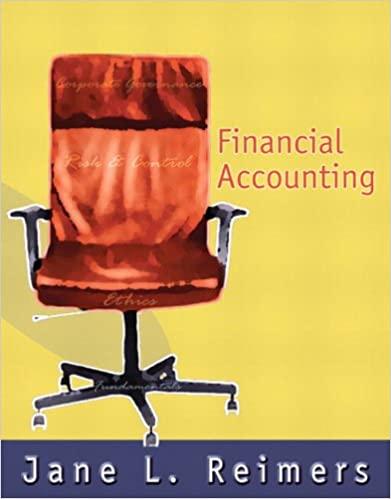Question
For many years, Vincent Company manufactured a single product called a mono-relay. Then three years ago, the company automated a portion of its plant and
For many years, Vincent Company manufactured a single product called a mono-relay. Then three years ago, the company automated a portion of its plant and at the same time introduced a second product, called a bi-relay, which has become increasingly popular. The bi-relay is a more complex product, requiring one hour of direct labor time per unit to manufacture and extensive machining in the automated portion of the plant. The mono-relay requires only 0.75 hour of direct labor time per unit and only a small amount of machining. Manufacturing overhead costs are currently assigned to products based on direct labor-hours.
Despite the growing popularity of the companys new bi-relay, profits have been declining steadily. Management is beginning to believe that there may be a problem with the companys costing system. Material and labor costs per unit are as follows:
Mono Bi
Relay Relay
Direct materials $35 $48
Direct labor (0.75 hour and 1.0 hour @ $12 per hour) $9 $12
Management estimates that the company will incur $1,000,000 in manufacturing overhead costs during the current year and 40,000 units of the mono-relay and 10,000 units of the bi-relay will be produced and sold.
Management is considering using activity-based costing to apply manufacturing overhead cost to products for external financial reports. The activity-based costing system would have the following four activity cost pools.
Estimated Mono Bi
Activity Cost (and Activity Measure) Cost Total Relay Relay
Maintaining parts inventory (number of part types) $ 180,000 225 75 150
Processing purchase orders (number of orders) 90,000 1,000 800 200
Quality control (number of tests) 230,000 5,750 2,500 3,250
Machine-related (machine-hours) 500,000 10,000 4,000 6,000
Total overhead cost $1,000,000
Required:
- Determine the unit product cost for each product using the traditional costing system.
- Determine the unit product cost for each product using the activity-based costing system.
- Explain the difference in the costs for the two products for the two different methods, the traditional costing system and the activity-based costing system.
(12 pts) 5. Tyler Sports, Inc., produces high-quality sports equipment. The companys Racket Division manufactures three tennis racquetsthe Standard, the Deluxe, and the Prothat are widely used in amateur play. Selected information on the racquets is given below:
Standard Deluxe Pro
Selling price per racquet $50.00 $70.00 $100.00
Variable expenses per racquet:
Production $25.00 $30.00 $32.00
Selling (5% of selling price) $2.50 $3.50 $5.00
All sales are made through the companys own retail outlets. The Racquet Division has the following monthly fixed costs:
Fixed production costs $200,000
Advertising expense 150,000
Administrative salaries 150,000
Total $500,000
Sales of the three racquets are in the proportion of 10 to 2 to 4, Standard, Deluxe, and Pro, respectively.
Required:
- Determine the breakeven point in revenues for each of the three racquets.
- Determine the operating income if a total of 32,000 racquets are sold in the sales mix proportion.
(10 pts) 6. Robinson Industries makes an electronic component in two departments, Machining and Assembly. The capacity per month is 50,000 units in the Machining Department and 80,000 units in the Assembly Department. The only variable cost of the product is direct material of $250 per unit. All direct material cost is incurred in the Machining Department. All other costs of operating the two departments are fixed costs. Robinson can sell as many units of this electronic component as it produces at a selling price of $550 per unit.
Required:
- Robinsons Machining managers believe that they could increase the capacity in their department by 10,000 units, if they were able to increase fixed costs by $2,000,000. Should the money be spent? Explain.
- An outside contractor offers to do assembly for 10,000 units at a cost of $1,800,000. Should Robinson accept the offer from the subcontractor? Show calculations.
- How do your answers in parts (a) and (b) relate to the theory of constraints? Explain.
Step by Step Solution
There are 3 Steps involved in it
Step: 1

Get Instant Access to Expert-Tailored Solutions
See step-by-step solutions with expert insights and AI powered tools for academic success
Step: 2

Step: 3

Ace Your Homework with AI
Get the answers you need in no time with our AI-driven, step-by-step assistance
Get Started


